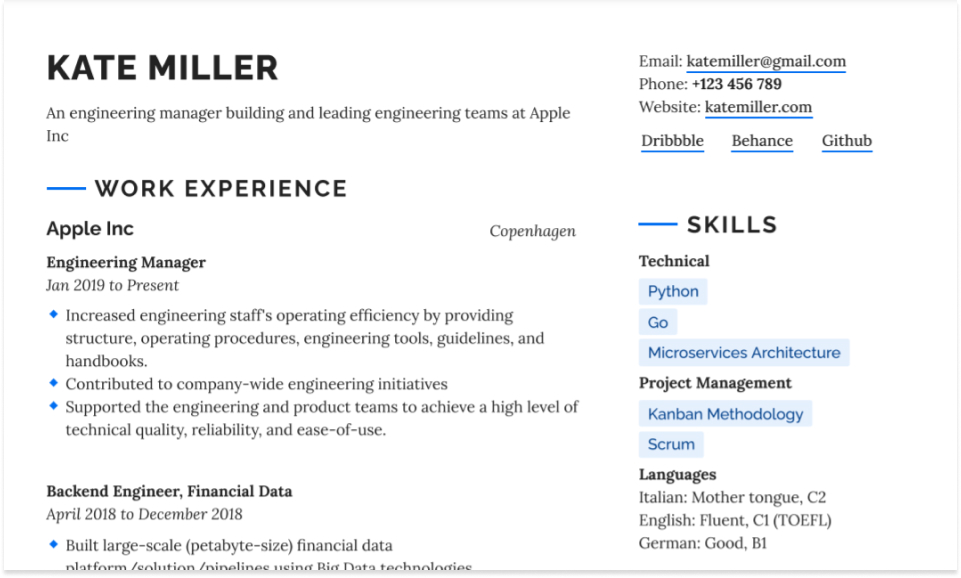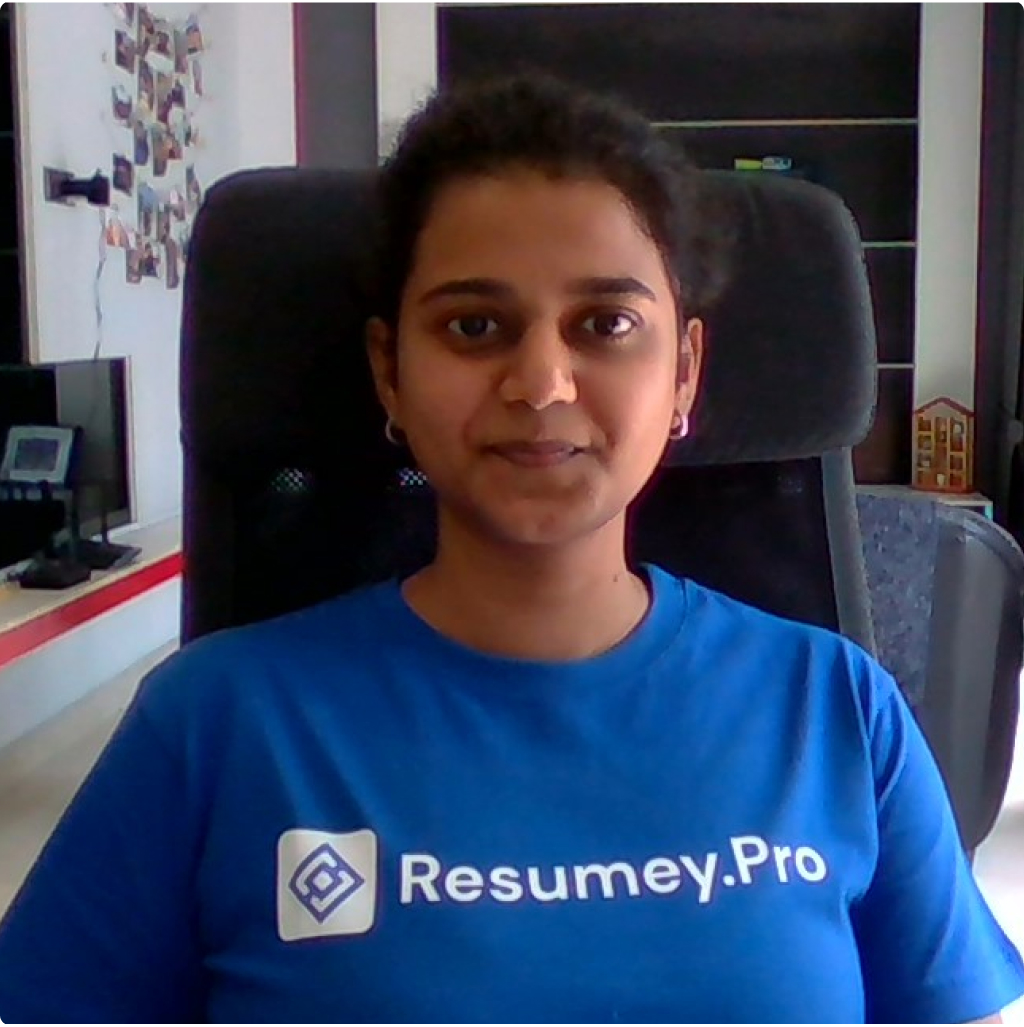Have you ever sent out dozens of resumes and never heard back? You're not alone. Writing an effective resume isn't just about listing your experience—it’s about making an impact in seconds.
There are some high-level guidelines you could follow regardless of your country, industry or role to understand what a good resume looks like.
1. Make Your Resume AI-Friendly (Not Just ATS-Friendly!)
Applicant Tracking Systems (ATS) are becoming more advanced with AI and NLP (Natural Language Processing). In 2025, many companies will use AI-powered resume screening tools that go beyond keyword matching to analyze context, skills, and achievements.
Use natural language instead of keyword stuffing. Instead of copying job descriptions, write clear, impact-driven statements. AI is trained to understand job-related context, so craft data-backed, concise, and relevant descriptions.
- Outdated Approach: Simply copying and pasting job description keywords into your resume. "Python developer with experience in backend development."
- Better Approach: Writing AI-friendly, contextually rich statements like: "Designed and optimized a predictive analytics model using Python, reducing customer churn by 22%."
By shifting to more specific, quantifiable descriptions, you help AI tools better gauge your capabilities and alignment with the job.
🔹 Resumey.Pro Tip: Write your resume in Markdown to highlight key skills using inline code (backticks).
2. Personal Branding in Resumes: Add a "Google Me" Section
Your online presence is your second resume. Recruiters Google you before deciding to interview you, so curating your digital footprint is key.
Add a "Google Me" section at the end of your resume, listing links to:
- Your LinkedIn profile with a strong “About” section.
- Your personal website or portfolio showcasing projects.
- Your GitHub (for developers) or Medium/Substack (for writers).
For example: 🔗 Google Me: YourName.com | LinkedIn | GitHub
🔹 Resumey.Pro Tip: You can use the URL syntax [link text](URL) in the Markdown to add links in your resume.
 Create a crisp and effective resume
Create a crisp and effective resume
3. Craft a Good Resume Summary
You may wonder, should a resume have an objective section? The best resume objectives feature a headline that encapsulates who you are in one or two lines—think of it as your elevator pitch.
Here’s an example:
”Experienced digital marketing strategist specializing in SEO and content marketing with 7+ years of experience working in mid-sized e-commerce companies. Proven track record of increasing organic traffic by 40% and driving revenue growth through data-driven marketing strategies.”
🔹Resumey.Pro Tip: The formula for a good resume summary (in any order):
- Area of expertise: Digital marketing strategist
- Niche: SEO and content marketing
- Years of experience: 7+ years
- Business size: Mid-sized e-commerce companies
4. Customize Your Resume for Every Job
Customizing your resume for each job application is crucial for standing out in a competitive job market. Tailoring your resume doesn't just mean changing your name on the header; it involves making specific adjustments that align your qualifications with the job you're applying for. Here's why and how you should do it.
- Increased ATS Score: Many companies use Applicant Tracking Systems (ATS) that scan resumes for relevant keywords from the job description. Tailoring your resume ensures it’s picked up by the ATS and increases your chances of being shortlisted.
- Showcase Relevant Skills: Customizing allows you to highlight the specific skills and experiences most relevant to the job, ensuring your qualifications match the employer’s needs.
- Demonstrates Effort and Interest: A tailored resume shows you’ve taken the time to understand the role and company, which can make a positive impression on recruiters and hiring managers.
While elaborating your experiences, go beyond just using keywords that are mentioned in the job description. The ATS may do a semantic match to identify related terms. For example, not just ‘Python developer’ but also backend engineer.
5. Showcase Achievements, Not Just Responsibilities
Can’t stress this enough - don’t confuse your responsibilities (job description) with your achievements (impact). If you're wondering how to make an effective resume for job applications, the key is to focus on the tangible outcomes of your work rather than simply listing your duties.
Mention how your skills and actions at work created a measurable impact on your projects and stakeholders. It would be good to quantify the impact but don’t worry if you can’t - describe your impact qualitatively in such cases.
| Responsibilites | Achievements |
|---|---|
| Worked on streamlining data capture | Reduced errors by 30% by improving data fields for users |
| Developed ABC front-end application | Built a Node.js & React app supporting 1,000+ users |
| Executed marketing campaigns | Grew organic traffic by 40% using SEO strategies |
6. Future-Proof Your Resume: The Soft Skills Revolution
The World Economic Forum's Future of Jobs Report highlights soft skills (like adaptability, emotional intelligence, leadership and critical thinking) as top hiring criteria in 2025. However, ATS systems struggle to scan soft skills unless they’re embedded within real work scenarios.
ATS (Applicant Tracking Systems) are primarily designed to scan resumes for hard skills (like specific software knowledge, technical expertise, or certifications) using algorithms that look for exact keywords and phrases. Soft skills, such as communication, leadership, or collaboration, are more abstract and difficult for ATS to detect, as they are often implied rather than explicitly stated.
To overcome this limitation, embed soft skills within real work examples and measurable achievements. This way you make it easier for both ATS and recruiters to recognize the value you bring beyond technical expertise.
Use action-oriented language. Instead of simply saying, "Strong communication skills," say:
-
"Collaborated with cross-functional teams to deliver client presentations, improving client satisfaction by 15%."
-
"Managed a diverse team of 10" (demonstrating leadership)
-
"Developed and maintained strong client relationships" (showing interpersonal skills)
-
"Resolved customer complaints quickly and effectively" (indicating problem-solving)
-
"Improved team productivity by 25% through mentoring junior staff and fostering an open, communicative work environment." (showing mentorship)
7. Keep It Simple with the Right Visual Hierarchy
Recruiters see hundreds of resumes daily, so your design should stand out but remain professional.
The key to achieving this is visual hierarchy—a design principle that ensures your resume is not only readable but also guides the reader through your most important information. This contributes to the most effective resume format, which prioritizes simplicity and clarity.
Prioritize Content with Layout
Think of your resume as a story, where the most important information comes first. Your layout should follow the typical visual flow:
- Contact Information (Top)
- Summary/Headline
- Work Experience
- Skills/Certifications
- Education (if relevant)
Use headers and subheaders to create a clear flow. In Markdown, headers are denoted with #, ##, or ###. This helps differentiate between different sections.
Use Clean and Modern Fonts
Fonts play a critical role in your resume's readability. Some good resume fonts are Lato, Roboto, or Open Sans. These fonts are simple yet stylish and won’t distract from the content. But if you want to be a bit more experimental and stand out from the crowd, here is a list of best resume fonts in 2025 which we recommend.
- Heading font: Use a bold and slightly larger font size for headings to make them stand out (e.g., ## for main headings, ### for subheadings in Markdown).
- Body font: Stick to a simpler font style for the content. Avoid overly decorative fonts that might be hard to read.
Limit Color Usage
While adding color can make your resume visually appealing, too much color can be overwhelming. Stick to 1-2 colors, which represent professionalism and clarity, ensuring your resume remains visually appealing yet professional. Choose the best resume colors—subtle tones like navy, maroon, or teal are often ideal for a professional look. Too much color can distract from your content, so maintain a balance between aesthetics and readability.
Avoid Overly Complex Graphics and Decorations
While it might seem tempting to make your resume stand out with flashy graphics, avoid complex graphics or unnecessary visual elements. A resume is a professional document—keep it simple and to the point. Instead, use simple dividers (--- or ___) and well-organized bullet points to create structure.
Resumes in 2025 are not just about keywords and formats—they’re about strategy, AI optimization, personal branding, and readability. By implementing these unique insights, you can make a lasting impression in the digital hiring world. 🚀
Final Thought: Resumes Are More Than Just a Document
Your resume in 2025 shouldn’t just be a list of past jobs—it should reflect:
- Your skills & achievements
- Your online presence & portfolio
- Your ability to stand out in a digital hiring landscape
Now, go ahead and give your resume a try!
Bonus: Try Our Markdown Resume Builder
Want to simplify the resume-writing process? Try our Markdown Resume Builder for easy formatting, instant styling, and ATS-friendly resume templates. Start Here: Markdown Resume Builder
